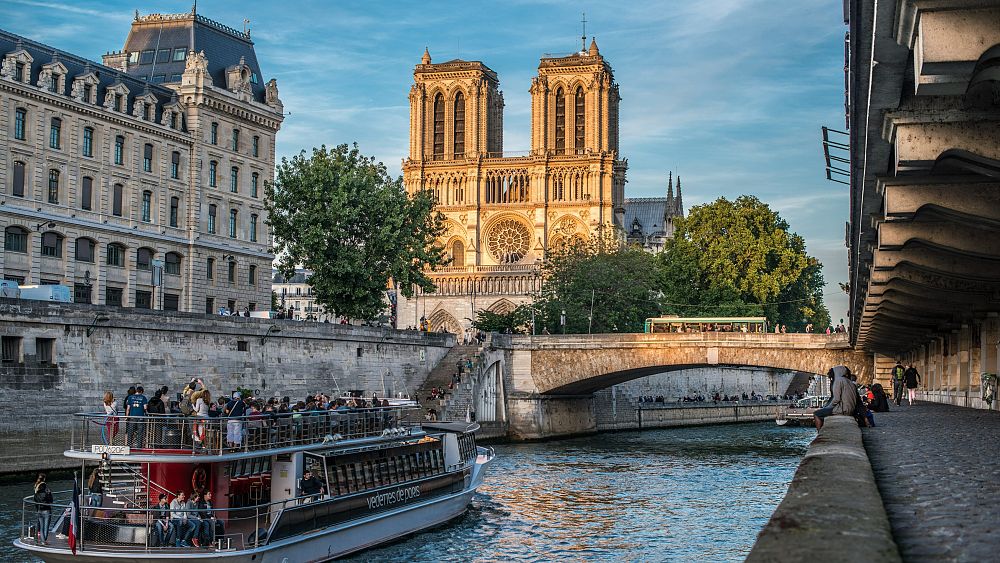During the Summer Olympics in Paris next year, some swimming events will take place in the waters of the Seine.
It is part of an ambitious plan to clean up the river and make it safe for swimmers.
Although the river hosted swimming events during the 1900 Olympics, bathing in the Seine has been forbidden since 1923 due to danger from boat traffic and water pollution.
Now, the city wants to revive the river as a swimming spot both for the Olympics and, by 2025, for the public too.
Is it safe to swim in the Seine?
While the banks of the Seine may be a romantic place for a stroll, its waters have become so toxic even fish struggle to survive.
As well as being a dumping ground for broken bikes and rubbish, Paris’s river is polluted by untreated wastewater.
The waterway’s main function now is to transport goods and people on boats.
However, that’s all set to change. Visitors to the city in a few years time might find themselves taking a dip in the famous waters.
A €1.4 billion project to reclaim the Seine
A comprehensive €1.4 billion cleanup project is underway to transform the noxious Seine waters into a swimming spot.
The initiative has been dragging on for decades, but the fast-approaching Olympics have accelerated the works.
The river needs to be ready for the Olympic triathlon and open-water races by July next year, followed by the Paralympics.
The Seine will also be the centrepiece of the opening ceremony, which will take place on the waters and the banks.
The cleanup project involves cracking down on homes and houseboats emptying their wastewater into the river, and improving sewage treatment plants.
Huge storage basins are also under construction to prevent bacteria-filled wastewater spilling into the river when it rains.
When will people be able to swim in the Seine?
Following the Olympics, the river is set to open to the public in summer 2025. The City Hall is studying the locations of five swimming spots along the Seine, both within Paris and further afield.
There will likely be two on the banks of the Parc Rives de Seine and one on the Marie arm in Paris Centre, one at the port of Bercy in the 12th arrondissement, and one on the Allée du Bord-de-l'Eau in the Bois de Boulogne in the 16th.
With Paris facing sweltering summer temperatures of potentially more than 50 degrees Celsius by 2050, swimmable waters will also help the city be more liveable in the future.
The project also hopes to inspire other cities to begin making their waterways safer.
“It will create waves, so to speak, across the world because a lot of cities are watching Paris,” says Dan Angelescu, a scientist who is tracking the Seine’s water quality for the City Hall with regular sampling.
“It’s the beginning of a movement,” he says. “We hope so, at least.”


